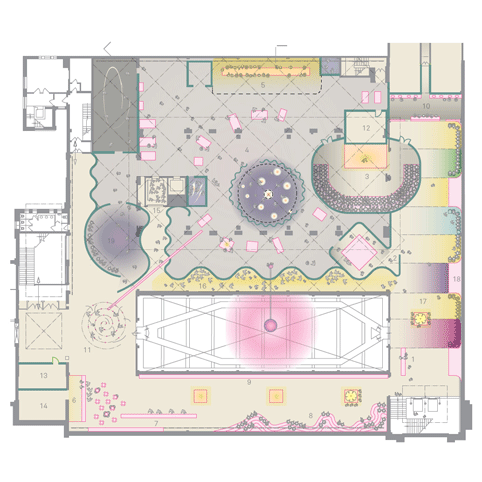Architect muf works on new Science Museum interactive gallery
Architect muf architecture/art is designing a new Science Museum interactive gallery at London’s Science Museum.

The permanent gallery is set to open in 2016, and will build on the ideas set out in the museum’s Launchpad children’s gallery. The interactive gallery will look to engage children in maths and science related topics through interactive exhibits and live events.
The new gallery will take over a larger area than the current Launchpad space, and aims to form ‘an environment which promotes observation and experimentation’, according to the Science Museum.
In muf’s proposal, the practice sets out plans for a space in which ‘circulation spaces are as important as the gallery itself’, allowing visitors to best observe and understand the ideas being presents in the exhibits.
‘The spatial layout of exhibits will make connections between different phenomena and theories’, says muf.

‘Activities within the gallery will influence spaces elsewhere in the museum.’
It adds, ‘Observations will be supported by choreographed repetition: seeing the same thing more than once at different scales and in different forms, in the architecture as well as in the exhibits.’
The gallery forms part of the Museum’s Masterplan, which will transform around a third of the Museum’s galleries over the next five years, aiming to improve public access to the collections and collections and ‘enrich the quality and scale of its interactive exhibits’, says the Science Museum.
Karen Livingstone, director of masterplan at the Science Museum says, ‘[muf architecture/art’s] scheme shows a keen awareness of the prime purpose of the gallery – fostering exploration and curiosity in science through intelligent and exciting design.’






These are some exciting explorations of interactivity in museum spaces. Schools need to become more like interactive museums to allow students to learn through sounds, movement, images, objects, spaces and experiences as well as words and numbers. Interactivity provides opportunities for visitors to each have a different experience each time they visit. Expressing interest by lingering in front of an exhibit or moving closer to it can trigger additional interactions and opportunities to learn not provided to those who walk by at a distance.